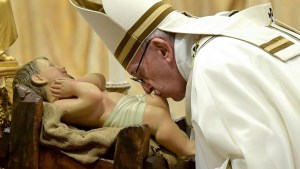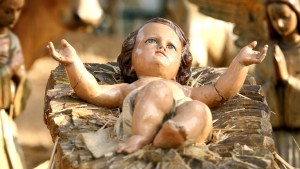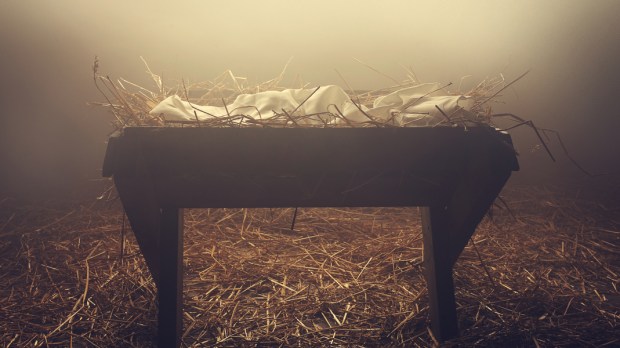Lenten Campaign 2025
This content is free of charge, as are all our articles.
Support us with a donation that is tax-deductible and enable us to continue to reach millions of readers.
One of the most profound symbols associated with the birth of Jesus is the manger. St. Luke narrates how the Virgin Mary, “wrapped him in swaddling clothes and laid him in a manger, because there was no room for them in the inn” (Luke 2:7).
A manger is a feeding trough for animals and was likely the cleanest place in the stable where the Virgin Mary could place the baby Jesus. Christians would later reflect on this profoundly symbolic action and find a connection to the Holy Eucharist, where Jesus himself becomes food for humanity.
St. Cyril of Alexandria in the 5th century explains, “The setting of Christ’s birth points us to the Eucharist. Since through sin man becomes like the beasts, Christ lies in the trough where animals feed, offering them, not hay, but his own body as life-giving bread.”
Earlier, St. John Chrysostom in the 4th century encouraged his congregation to attend Mass on Christmas Day, where they could approach the altar as if they were going to the manger.
For if we approach with faith we shall surely behold him lying in a manger. His holy table will supply the place of a manger. For there will be spread the body of our Lord, not wrapped in swaddling clothes as then, but on all sides surrounded by his Holy Spirit.
St. Bede in the 7th century also saw this symbolism.
He is confined in the narrow space of a rude manger, whose seat is the heavens, that He may give us ample room in the joys of His heavenly kingdom. He Who is the bread of Angels is laid down in a manger, that He might feed us, as it were the sacred animals, with the bread of His flesh.
This is why the feast of Christmas is often labeled a “eucharistic feast,” on account of the rich symbolism of the manger scene.
As you kneel before the Nativity scene this Christmas, dwell upon the beautiful gift of the Eucharist and how we can prepare to receive Jesus into our hearts.

Read more:
Pope Francis explains the symbolism of each figure in the Nativity scene

Read more:
Here are a few presents on Jesus’ Christmas list

